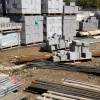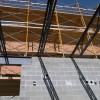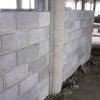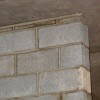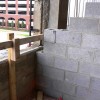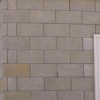Concrete Unit Masonry
Concrete unit masonry is a form of masonry which uses prefabricated concrete blocks, including hollow or solid architectural concrete masonry units (CMU). To be considered solid, units must be at least 75 percent solid. Hollow concrete units are preferred because of the reduced weight, easier handling, and lower cost.Concrete masonry units are made from hydraulic cement, water, and mineral aggregates with or without the inclusion of other materials. CMU are molded using a relatively dry mix of cement and aggregates; they are compacted and consolidated using low-frequency, high-amplitude vibration, and then cured under controlled temperature and humidity. These units are suitable for both loadbearing and non-loadbearing applications.
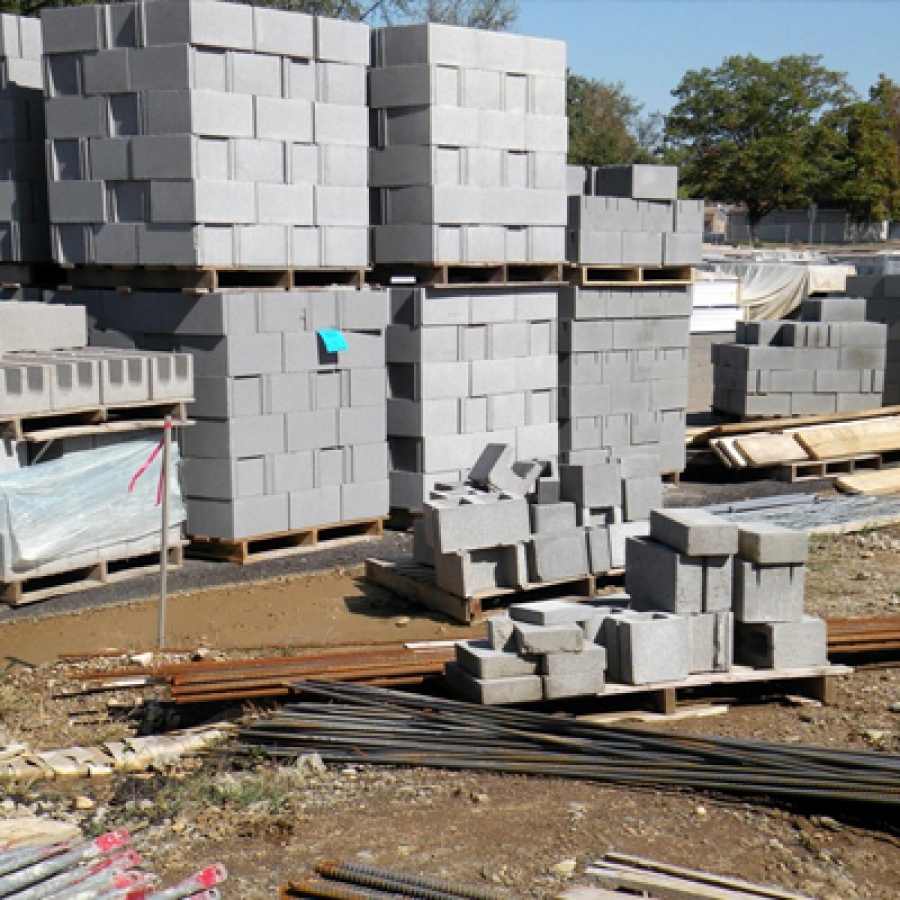
Topic Summary
Standard hollow CMU are classified by the weight of the concrete mix. Because up to 90 percent of a concrete masonry unit is aggregate, the type of aggregate used will determine the weight classification. There are three classes of concrete masonry units: normal weight, medium weight, and lightweight.
Lightweight CMU are made with a concrete mix weighing less than 105 lb/cu ft using expanded shale, expanded slag, cinders, pumice, or scoria. Lightweight units are more porous, but offer better fire, thermal, and sound resistance.
Medium weight units are made with a concrete mix weighing between 105 and 125 lb/cu ft, using air-cooled blast furnace slag.
Normal weight units are made with concrete containing sand and gravel, or crushed limestone, weighing more than 125 lb/cu ft. Choice of aggregate used is largely a factor of local availability.
CMU are available in standard sizes, with typical nominal face dimensions of 8 inches high by 16 inches long, and in nominal widths of 4, 6, 8, 10, and 12 inches. Hollow CMU may have two or three cores, which are tapered slightly thinner at the bottom and thicker at the top. The taper aids in removal from the molds, but also provides a larger surface for the mortar bed. Thickness of the outer faces can vary, with the thicker faces providing higher fire resistance ratings.
Special block shapes include lintel units that allow for grouting and reinforcing, blocks with square ends for exposed corners and pilasters, and blocks that have ends with rabbets for keying of control joint materials or jambs of doors and windows.
A special kind of CMU, cellular concrete block, is made using a foaming agent to produce a low-density concrete mix. These units have excellent insulating, sound-dampening and fire resistance properties, but are low in compressive strength. Also, because they are quite porous, they must be covered with stucco or another protective facing.
When particular features are desired, either for appearance (such as surface textures, finishes, or colors) or for functional properties (such as water repellency, density classification, higher compressive strength, fire resistance, or thermal or acoustical performance), suppliers should be consulted as to availability.

